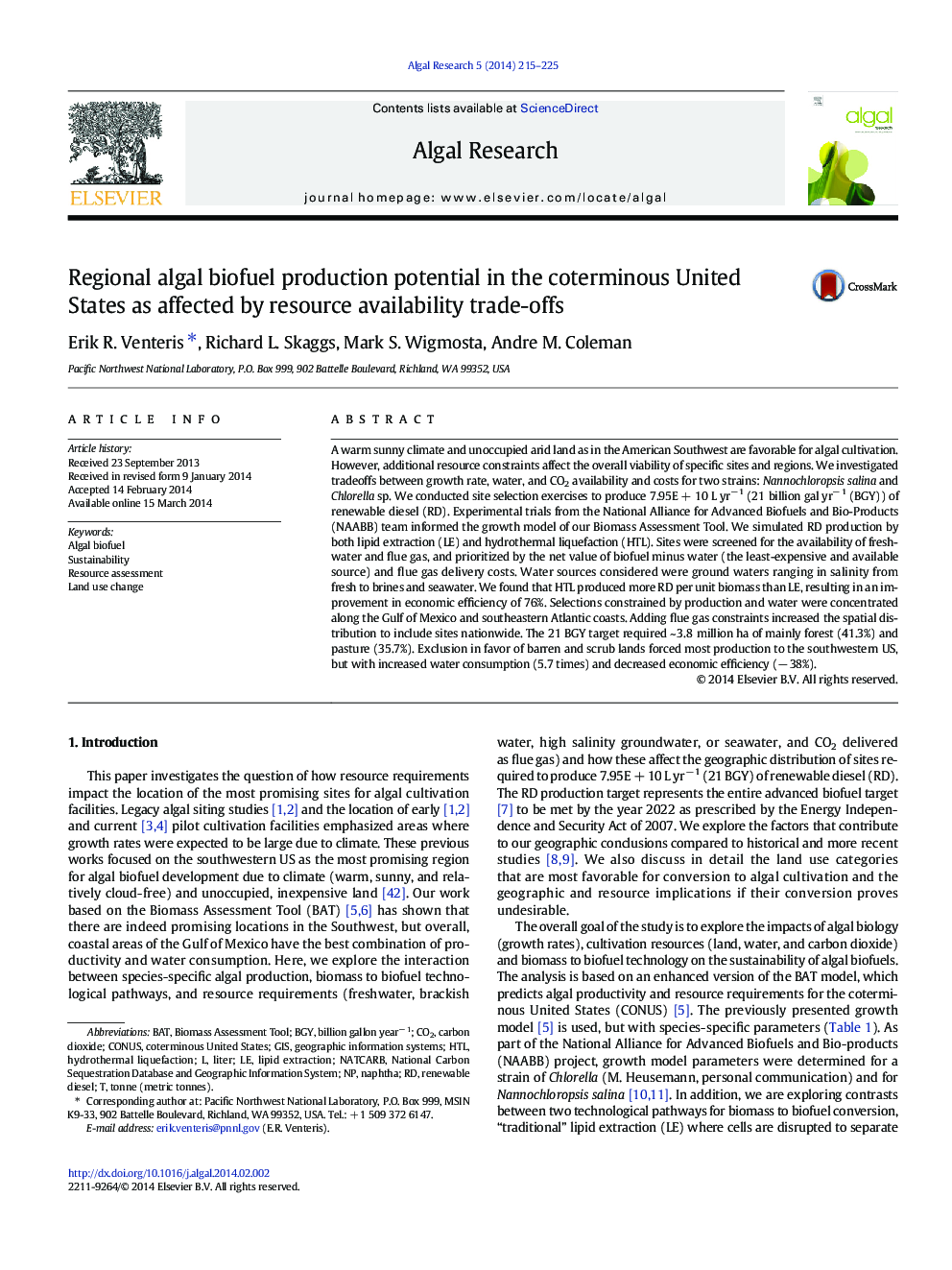| Article ID | Journal | Published Year | Pages | File Type |
|---|---|---|---|---|
| 1742107 | Algal Research | 2014 | 11 Pages |
•We estimate land, water, and CO2 resources needed to produce 21 BGY of renewable diesel.•Fuel estimates are based on N. salina and Chlorella, lipid extraction and hydrothermal liquefaction.•The most resource efficient scenario is Chlorella combined with hydrothermal liquefaction.•Most favorable sites are located in the southeastern United States on forest and pasture land.•Producing 21 BGY using only arid lands and non-competitive waters results in significant inefficiencies.
A warm sunny climate and unoccupied arid land as in the American Southwest are favorable for algal cultivation. However, additional resource constraints affect the overall viability of specific sites and regions. We investigated tradeoffs between growth rate, water, and CO2 availability and costs for two strains: Nannochloropsis salina and Chlorella sp. We conducted site selection exercises to produce 7.95E + 10 L yr− 1 (21 billion gal yr− 1 (BGY)) of renewable diesel (RD). Experimental trials from the National Alliance for Advanced Biofuels and Bio-Products (NAABB) team informed the growth model of our Biomass Assessment Tool. We simulated RD production by both lipid extraction (LE) and hydrothermal liquefaction (HTL). Sites were screened for the availability of freshwater and flue gas, and prioritized by the net value of biofuel minus water (the least-expensive and available source) and flue gas delivery costs. Water sources considered were ground waters ranging in salinity from fresh to brines and seawater. We found that HTL produced more RD per unit biomass than LE, resulting in an improvement in economic efficiency of 76%. Selections constrained by production and water were concentrated along the Gulf of Mexico and southeastern Atlantic coasts. Adding flue gas constraints increased the spatial distribution to include sites nationwide. The 21 BGY target required ~ 3.8 million ha of mainly forest (41.3%) and pasture (35.7%). Exclusion in favor of barren and scrub lands forced most production to the southwestern US, but with increased water consumption (5.7 times) and decreased economic efficiency (− 38%).
